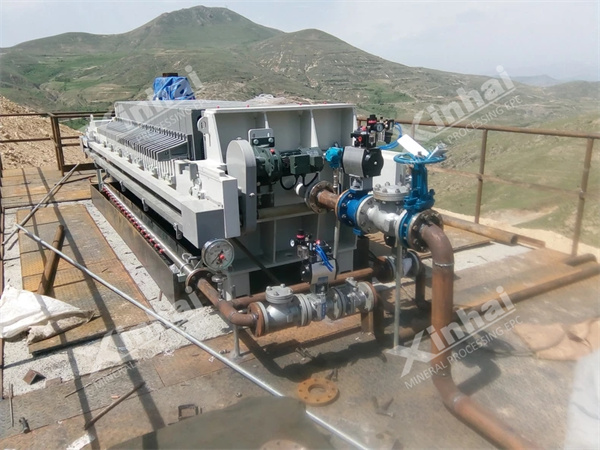Graphite, as an important inorganic non-metallic material, has a wide range of applications in multiple fields. However, the mining and processing of graphite will generate a large amount of tailings water, which, if discharged directly without treatment, will cause serious pollution to the environment. Therefore, the development of efficient and environmentally friendly graphite tailings dry stacking process is particularly important.
Graphite tailings dry stacking process can not only reduce environmental pollution, but also improve the reuse rate of resources. The traditional tailings water treatment methods have many problems, such as environmental pollution hazards and tailings dam collapse accidents. The dry discharge technology separates tailings water into dry tailings sand and colorless transparent tailings water, achieving the recycling and utilization of tailings resources and water resource conservation.

(1) Process Overview
The graphite tailings dry stacking process developed by Shandong Xinhai Mining Equipment mainly includes equipment such as tailings classifiers, filters, and tailings filter presses. This technology separates tailings water through physical methods to obtain dry sand and clean water, achieving dry tailings storage and water resource recycling.
(2) Tailings dry stacking process flow
The process flow includes the following steps:
The tailings water is pumped to the tailings classifier, and after classification, dry sand and overflow liquid are obtained.
The overflow liquid enters the degassing tank and is then pumped into the filter for filtration.
The filtered clean water is reused for flotation and ball milling, while the slurry enters the intermediate tank.
Mud is pumped into the tailings filter press, and the dry sand produced is comprehensively utilized with the dry sand produced by the tailings classifier.
(3) Main equipment
Tailings classifier: used for preliminary separation of solid particles in tailings water.
Filter: The core equipment uses polymer charged medium balls to adsorb suspended solids and heavy metal ions.
Tailings filter press: used to dehydrate mud and obtain dry sand.
Reducing environmental pollution: Through dry discharge technology, the pollution of tailings water on surface water, groundwater, and air has been effectively reduced.
Water conservation: The treated tailings water is colorless and transparent, and can be reused for flotation and ball milling, saving a lot of water resources.
Resource utilization: The tailings obtained from dry discharge can be further processed or sold to achieve resource reuse.
Save investment: Compared with traditional tailings ponds, dry discharge technology can greatly save investment costs.
Reduce operating costs: Dry discharge technology has advantages such as low operating costs, energy conservation, and consumption reduction.
Improving corporate image: By achieving zero discharge of tailings water, companies can establish a good social image.
The graphite tailings dry stacking process, as an efficient and environmentally friendly resource utilization method, has broad application prospects. With the continuous advancement of technology and the increasing demand for environmental protection, this technology will be increasingly widely applied in the graphite industry. In the future, graphite tailings dry discharge technology will continue to develop towards automation and intelligence, making greater contributions to the green development of the mining industry.